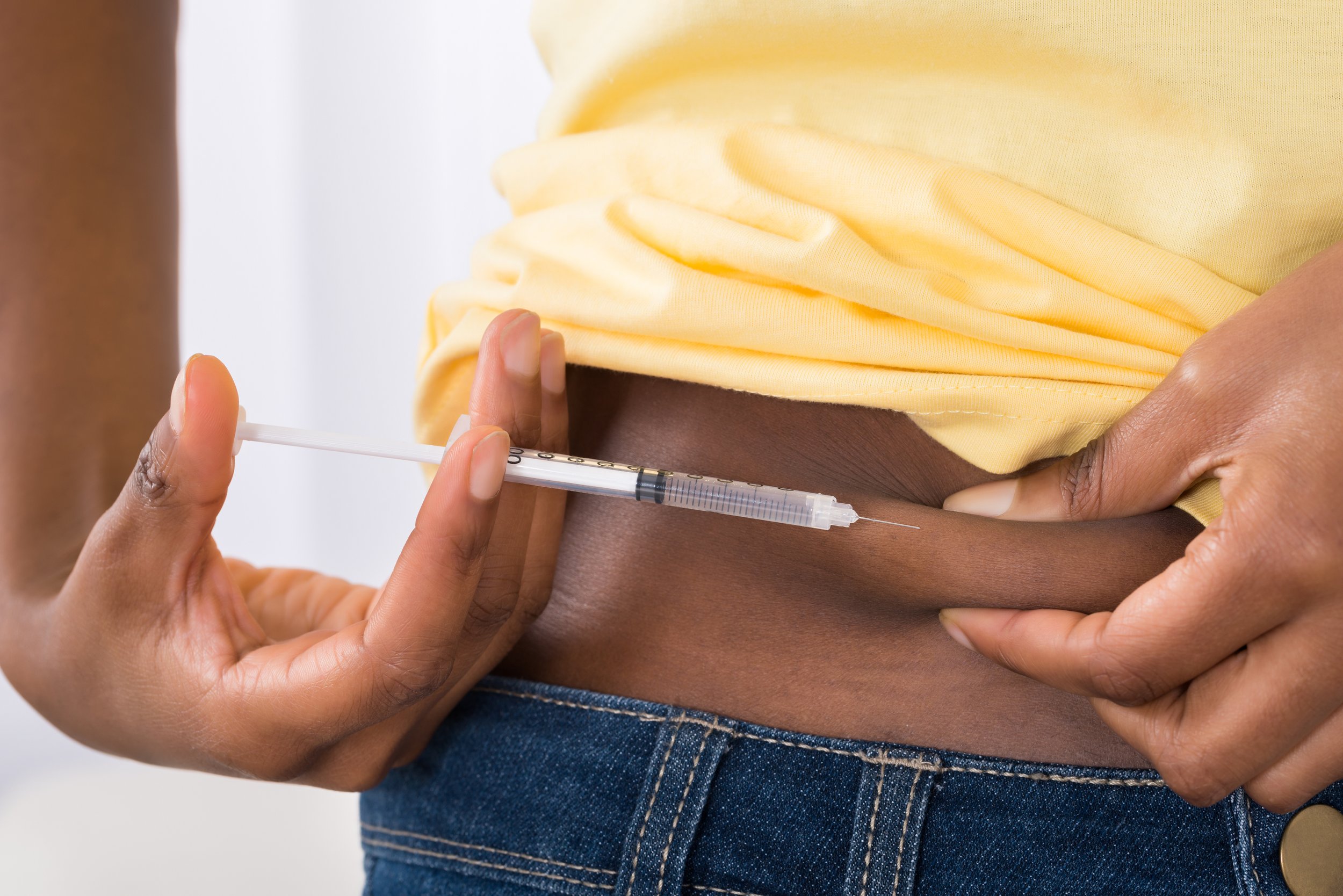Bottling a Genie: Insulin Access in Low-Income Countries
Second Place Winner of the 2024 Global Health Unfiltered Op-ed Competition
A diabetic woman injects injecting insulin Credit: AndeyPopov
A century after the discovery of insulin, access remains elusive in most low-income countries (LIC) in Sub-Saharan Africa. The result? Harrowing patient stories, such as those of a 16-year-old Malawian dying of preventable diabetes complications, treatable with insulin because the hospital ran out of stock, or a 20-year-old Malawian weighing 25 kg as a result of limited insulin access and rationing. Both individuals had type 1 diabetes (T1D), a life-long condition with long-available treatment options. Yet, such poignant stories persist with alarming frequency. Adding insult to injury, this anachronistic gap starkly contrasts the World Health Organization (WHO) target of affordable insulin access for 100% of individuals with T1D by 2030.
In T1D, the body produces little to no insulin, a hormone essential for blood sugar absorption into body cells. Without insulin, cellular absorption seizes, and blood sugar levels climb, causing complications like vision impairment, nerve damage, and life-threatening emergencies. Shockingly, only half of those with T1D in Africa access insulin, while premature deaths from diabetes approach 60%, and the number of people per 100,000 population living with diabetes is twice the global average.
In LICs such as Malawi, where over 70% of the population resides in rural areas and lives on less than $2.15 per day, the initial recourse for healthcare services is health centers and secondary-level facilities that provide charge-free services. Addressing the healthcare needs of individuals with T1D in these settings necessitates, at a minimum, the consistent availability and provision of regular and intermediate-acting insulin and needles for the administration of the drug. Unfortunately, this life-saving medication and its wrap-around resources face significant challenges in terms of accessibility—the intermittent availability of insulin further compounds the problem. Even when insulin is obtainable, its starting price in private pharmaceutical outlets is exorbitant, ranging between $25-$35. This pricing dynamic further solidifies its inaccessibility for the vulnerable populations who need it most.
The debacle of insulin inequity is a wicked problem with intertwined contributors at the system and structural level demanding strong political will and formidable leadership to address. Interestingly, the inventors of insulin had sold its patent for a token of $1 to support unbridled access to the life-saving drug as an ethical choice. However, the sophisticated manufacturing methodology required to mass produce insulin later contributed to 95% of its global production being limited to three major pharmaceutical companies.
Mother measuring daughter's glucose with a digital device. Credit: La Lumiere
The Access to Medicine Foundation recently published a synopsis of industry-related factors and system bottlenecks, e.g., drug registration processes, that lead to insulin access issues. The report attributes poor access to low affordability, production monopolies, neglect of alternatives like analogs or biosimilars, as well as supply issues. Additionally, the pace of change is unconscionably slow, and while pharmaceutical companies seem inclined to participate as part of the solution, the initiatives so far have been piecemeal. However, growing momentum, a desire for action, and budding innovation – are all essential for creative thinking and complex problem-solving.
Integrating financial sustainability into bridging initiatives is crucial for their evolution into lasting solutions for vulnerable patient populations with lifelong needs. One such approach is investment in local manufacturing infrastructure and incentivized industry partnerships that yield additional benefits through human development and broader economic gains. An example is the recent collaboration between Novo Nordisk and Aspen, Africa’s largest pharmaceutical company, to manufacture human insulin in South Africa. Aspen’s insulin will be supplied to patients with diabetes across Africa by producing 16 million vials to cater to 1 million people in 2024 and expanding production to cover 4.1 million people by 2026. It will be essential to evaluate the real-world impact of this substantive initiative and build on its successes. For context, the adult population living with diabetes in Africa is estimated to approach 55 million by 2045.
Considering the issue of insulin access as a supply and demand mismatch provides another dimension for action. For instance, under-importation is a recognized contributor to poor insulin access in LICs. With the increasing digitalization of the global supply chain landscape and the resulting availability of big data, the door is wide open for applications of innovative solutions such as Machine Learning (ML). ML, a type of artificial intelligence, uses historical data and algorithms to analyze patterns from data to make predictions and decisions without explicit programming. The increasing uptake of ML in the logistics industry can be pivoted for application to global insulin supply chain management and its nuanced needs (e.g., temperature control requirements to maintain cold chain across warehousing, transport, and delivery). ML can significantly improve insulin access through enhanced demand forecasting, real-time insights into trends and emerging logistical challenges, and optimization of production processes (e.g., through increased procurement efficiency for raw materials), as well as data-guided strategizing and decision-making. As a cherry on top, any cost savings from ML applications in insulin production and distribution could be reinvested into further access enhancement initiatives.
To be sure, inequitable insulin access in LICs has multi-pronged contributors, likely not solvable by any single action. Scalable application of ML, as an example, predicates collaborative efforts to enable data sharing and circumvent regulatory challenges as well as alignment between technology developers, health care providers, and standard-making bodies for effective implementation and ethical and safe use of artificial intelligence in insulin management. The critical nature of insulin for managing T1D demands concerted local and global efforts to ensure its consistent availability and affordability, thereby bridging the gap in healthcare accessibility and promoting equitable health outcomes for all.
Whichever direction we stride in, it is vital to keep moving forward. As we tackle the proverbial genie of equitable insulin access, let’s bottle it with unwavering determination, drawing inspiration from Banting, a co-inventor whose resounding words, "insulin belongs to the world,” echo our pursuit's spirit.

